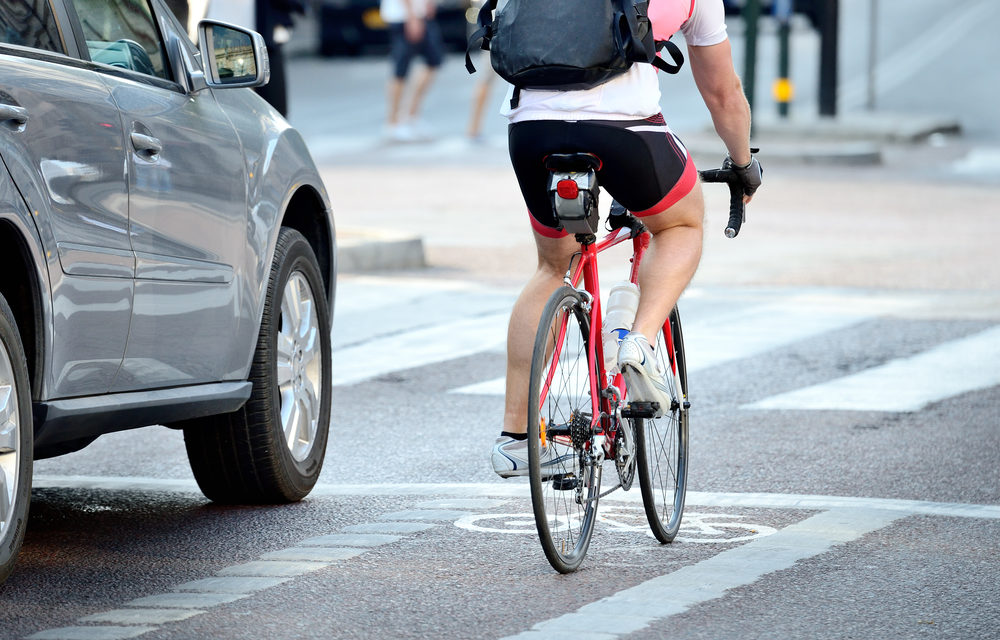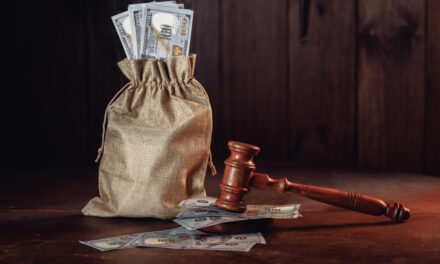Auto Club: High Gas Prices Increase Popularity of Bicycles and Motorcycles, Raising Safety Concerns
Industry experts say the skyrocketing popularity of bicycles, eBikes, motorcycles, scooters and other “micromobility” devices during the pandemic is continuing even after people return to pre-pandemic activities, at least partly because of record-high gas prices.
The Automobile Club of Southern California and the Motorcycle Safety Foundation are warning all road users during Bicycle Safety Month and Motorcycle Safety Month that bike and motorcycle riders are at increased risk of being injured or killed in a crash with a vehicle, so drivers and riders need to watch out for each other.
Motorcycle crash fatalities and serious injuries declined in California in both 2019 and 2020, but then jumped up to a 10-year high point in 2021, with nearly 4,000 motorcyclists seriously injured or killed last year. That number represents more than 20 percent of all serious injury and fatal crashes. Bicyclist fatalities and serious injuries have remained fairly steady in California over the past 10 years at about 1,100 per year.
“With traffic returning to pre-pandemic levels and higher gas prices, more people could be motivated to use bicycles and motorcycles for their daily commutes, and we don’t want vehicle versus cycle crashes to increase this year,” said Anita Lorz Villagrana, the Auto Club’s Manager of Traffic Safety and Community Programs. “We encourage riders to take a safety class such as the workshops we offer this month, or a safety class from an organization like the Motorcycle Safety Foundation, to prevent potentially tragic crashes.”
To help new and prospective eBike riders and cyclists stay safe on the road, the Auto Club is offering two free webinars this month:
- Bike Safety Basics – Wednesday, May 11 from Noon to 12:45 p.m.
- Safe eBike Operation – Wednesday, May 25 from Noon to 12:45 p.m.
Pre-registration for both webinars is required at AAA.com/BikeSafe
The Auto Club recommends the following tips to help drivers and bicyclists safely share the road:
Motorists:
- Stay alert—avoid all distractions while driving.
- Yield to bicyclists when turning.
- In bad weather, give bicyclists extra passing room, just as you would other motorists.
- Make a visual check for bicyclists by checking mirrors and blind spots before entering or leaving a lane of traffic.
Slow down and give at least 3 feet of clearance when passing. - Reduce your speed when passing bicyclists, especially when the road is narrow.
- NEVER honk your horn at a bicyclist—it could cause them to swerve into traffic or off the roadway and crash.
- Always check for bicyclists before opening your car door.
- Children on bicycles are often unpredictable—expect the unexpected.
Bicyclists:
- Ride on the roadway or shared pathways, rather than on sidewalks.
- Follow the same rules of the road as other roadway users, including riding in the same direction as traffic and following all the same traffic signs and signals.
- Signal all turns.
- Wear a bicycle helmet every time and on every ride. Nearly all bicyclists who died from a collision were not wearing helmets.
- Be visible by wearing bright colors during the day, reflective gear in low light conditions, and use head and taillights at night.
- Remember that respect is a two-way street. Show motorists the same courtesy that you expect from them.
Motorcycle Safety Tips
The Motorcycle Safety Foundation offers these top five tips to drivers:
- Take an extra moment to look for motorcycles. Because of its small size, a motorcycle can be easily hidden in a car’s blind spots, so check — then check again — before changing lanes or making a turn.
- Predict a motorcycle is closer than it looks. A motorcycle may look farther away than it is because of its small size, and it may be difficult to judge a motorcycle’s speed. When checking traffic to turn at an intersection or into (or out of) a driveway, predict a motorcycle is closer than it appears.
- Keep a safe distance. Motorcyclists often slow by rolling off the throttle or downshifting, thus not activating the brake light, so allow more following distance, about 3 to 4 seconds.
- Understand lane shifting. Motorcyclists often adjust position within a lane to be seen more easily and to minimize effects of road debris, passing vehicles, and wind. Understand that motorcyclists adjust lane position for a purpose, not to show off or to allow you to share the lane with them.
- See the person. When a motorcycle is in motion, see more than the motorcycle, see the person under the helmet, who could be your friend, neighbor, or relative.
And top five tips for riders:
- Be visible. Motorists often have trouble seeing motorcycles, so wear bright clothing and a light-colored helmet.
- Always have your headlight on, day and night, and avoid riding in blind spots of cars and trucks. If possible, flash your brake light when slowing down and before stopping.
- But pretend you are invisible. If you assume others on the road can’t see you, and any car that can hit you will hit you, you will tend to ride in a hyper-aware mindset and learn to notice every detail in your surroundings.
- Take extra responsibility for your safety and ride defensively.
- Gear up every ride. Wear proper riding gear from head to toe. Full-face helmets provide the best protection, and jackets, pants, gloves, and boots that are made for riding will generally be made of abrasion-resistant material and provide additional comfort and protection around joints and other areas.
- Use good street strategies. Constantly search the road for changing conditions and use the Search-Evaluate-Execute strategy (SEE) to assess and respond to hazards before you have to react to an emergency.
- Before you ride, check over your bike. Make a habit of doing a pre-ride check, which includes looking over your tires and wheels, checking fluids, cables, your bike’s chassis, lights and electronics, and the stands. Use the T-CLOCS inspection checklist to help you.
More tips are available at msf-usa.org and forcardrivers.com.
Image Sources
- bicyclist: Shutterstock




![Enrolling Now, Rewarding Careers Ahead [Sponsored]](https://ukenreport.com/wp-content/uploads/2024/04/COD_heroes_1-1385-2-440x264.jpg)


